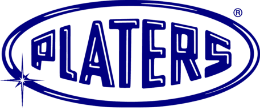Dura - 60
Catalyst For Hard Chrome
Description
Dura-60 is a liquid “Non Etch” additive for hard chromium plating baths that provides improved results. This is a “Work Horse” Bath that is frequently used by job shops. Dura-60 works well in a wide variety of applications, for both ID and OD plating from flash deposits up to 0.100″ per side. Dura-60 is used with generic chromic acid; no proprietary blends to buy.
The process is very user friendly, easy to control and inexpensive to operate.
- Harder & Smoother Deposit
- Improved Throwing Power
- Better Micro-crack Structure
- Buffered Bath For Impurities
- Non Etch – Non Fluoride
- Better Plating Speed
Bath Control
The Dura-60 bath can operate with a chromic acid level of 20 – 50 oz/gal. Most operations control the chrome at 30 oz/gal. A sulfate ratio of 110:1 (95 – 120:1) is generally used with a bath temperature of 130 – 140 F. Dura-76 can also be used in this process to chelate bath contaminants.
Additions
The initial addition of Dura-60 is 3 % of the bath volume. Maintenance additions of 1/2 gallon per 100,000 amp. hours (approx. 2 gallons per 100 pounds of chromic acid consumed) should be made. Send a bath sample to Plating Resources, Inc. on a monthly basis for a complete analysis.
Plating Speeds
Dura-60 allows operation at high current densities for faster plating speeds. The following is typical:
2 ASI 0.0008” / hr. / side
4 ASI 0.0016″
8 ASI 0.0032″
Anodes
The typical stick or conforming type anodes for conventional hard chrome are used with this process. Either 6% antimony-lead or 7% tin-lead can be used depending on the desired life and rigidity needed.
Equipment
The equipment normally used for hard chrome plating is satisfactory for the Dura-60 process. Typical tank linings like PVC, Koroseal or molded HD polyethylene are best. While lead linings can also be used they are not recommended due to their conductivity. The rectifier(s) can be the typical SCR type (or other control types) and should have sufficient amperage capacity at up to 9-12 volts, with a maximum of 5% ripple at the actual voltage used. This slightly higher voltage can be beneficial when contaminants build-up. The tank should be ventilated and PVC systems are commonly used. The heating and cooling systems should be of either titanium or Teflon construction with controls to maintain the desired bath temperature. Mild air agitation is desirable for mixing in chemical additions and avoiding temperature stratification in deep tanks. The air agitation should be provided by a low-pressure blower and controlled to avoid excess chrome mist. Pumps, filters and plumbing should be schedule 80 CPVC with glued fittings.
Bath Impurities
Bath impurities should be kept as low as possible for best results. Of particular concern is trivalent, copper and iron. High impurity levels require additional voltage to maintain the desired current density with a greater tendency for burning, pitting and a reduction in throwing power. The best removal method for trivalent and chloride is to dummy the bath using CR-3 Reducer and an anode ratio of at least 20:1. Porous pots used with CR-3 Reducer can be used to remove copper and iron; this process can be slow if the levels are high though. Dura-76 is helpful in overcoming the effect of bath impurities by buffering and chelation.
Analytical Control
The Dura bath should be analyzed on a regular basis for chromic acid and sulfate. Make additions as needed to maintain the desired concentrations. The recommended frequency depends on the tank volume and the work load; most shops do this weekly. Bath samples can be sent to Plating Resources, Inc. on a monthly basis for a detailed analysis at nominal cost. This service can be used as either the primary control or as a back-up for your in-house tests. We can also provide analysis of the Dura Additive without cost at any time.
Regulations
Like all chrome plating solutions, the Dura bath produces misting and this can be reduced if lower chrome levels are used. This mist contains Cr(VI) which is regulated by the EPA for environmental and OSHA for worker safety issues. Be sure to follow all federal, state and local regulations for safe operation and hazardous disposal.
Caution
The Dura bath contains chromic acid, sulfuric acid and the various Dura additives outlined above. These are all industrial chemicals and must be handled carefully and in accordance with the directives provided in the individual SDS forms.
Read and understand the SDS on all of these chemicals before handling or using. Ensure that all regulatory standards are followed and limit personal exposure as required for Cr(VI) by OSHA.
Avoid personal contact with these chemicals, avoid splashing and avoid breathing any fumes released during operation. Do not inhale any dust, mist or vapors from these chemicals. Do not allow these products to contact the skin or eyes. In case of contact, flush immediately with large amounts of fresh water and seek immediate medical attention.
Wear protective clothing such as aprons, gloves, face masks and respirators. Be sure that adequate eyewashes and emergency showers are available nearby before handling or using any of these chemicals.
Designated work clothing should be worn while using these chemicals and the worker(s) should thoroughly shower and change into fresh-clean street clothing before going home. Decontaminate all work clothing before reuse.
The user is responsible for providing adequate work clothing, personal protection, limiting personal exposure, and providing any required clean-up, decontamination as well as any needed medical attention.
